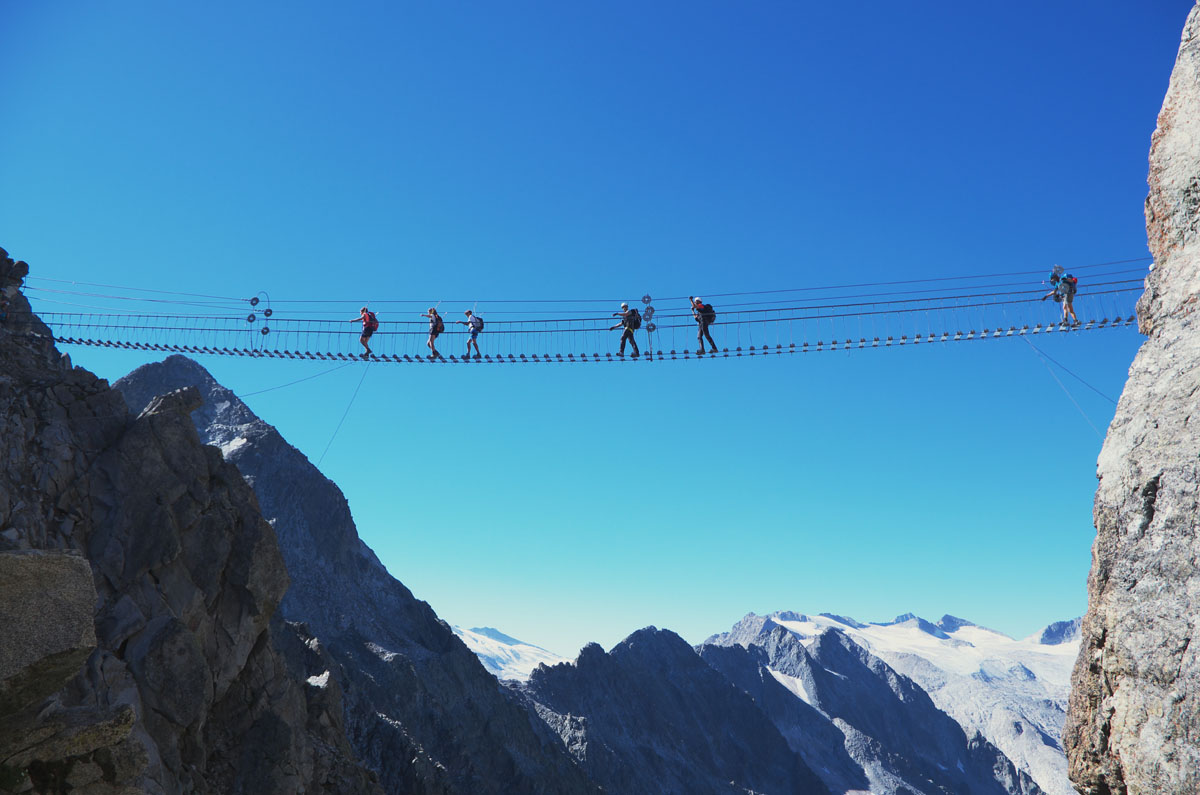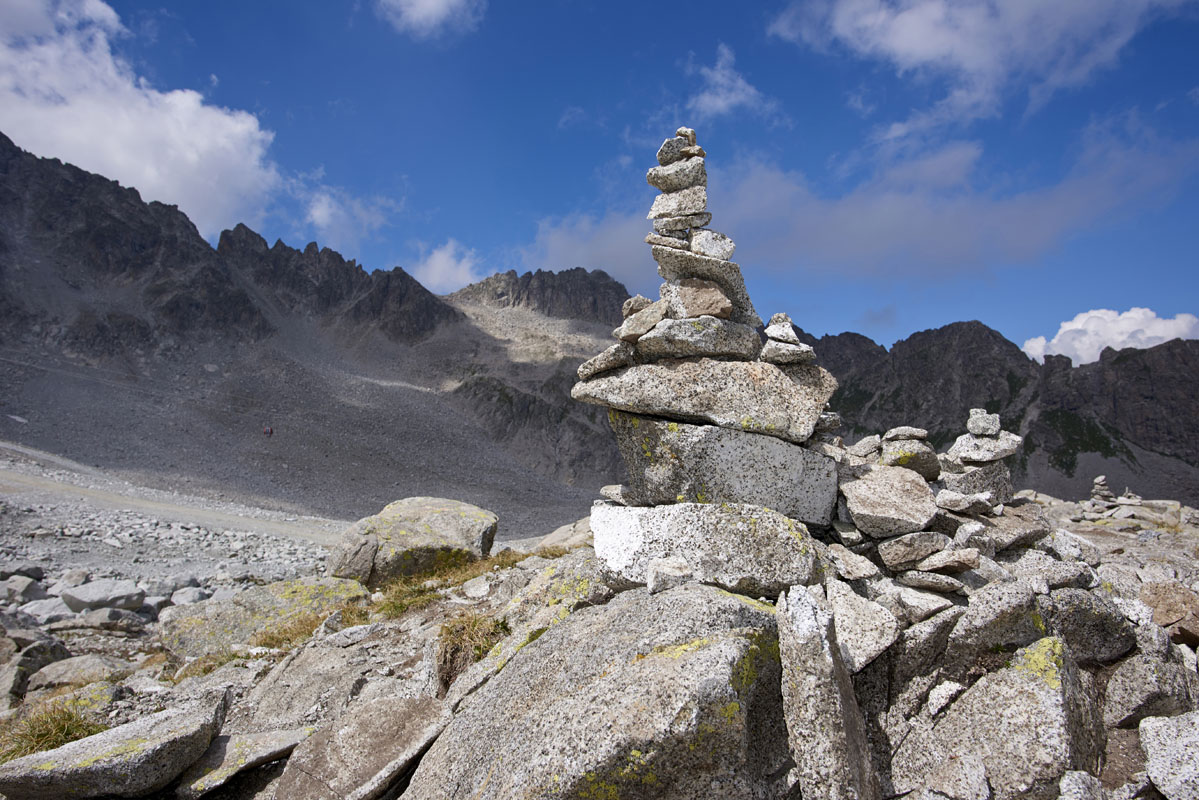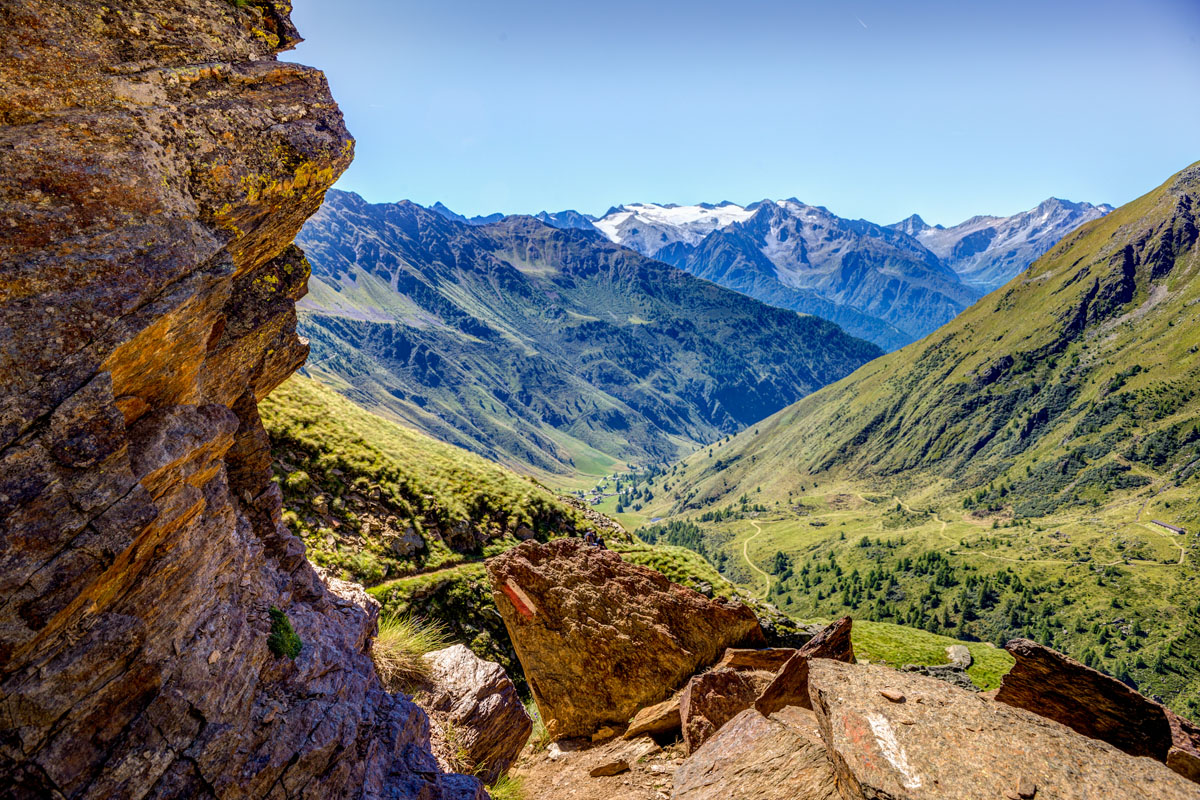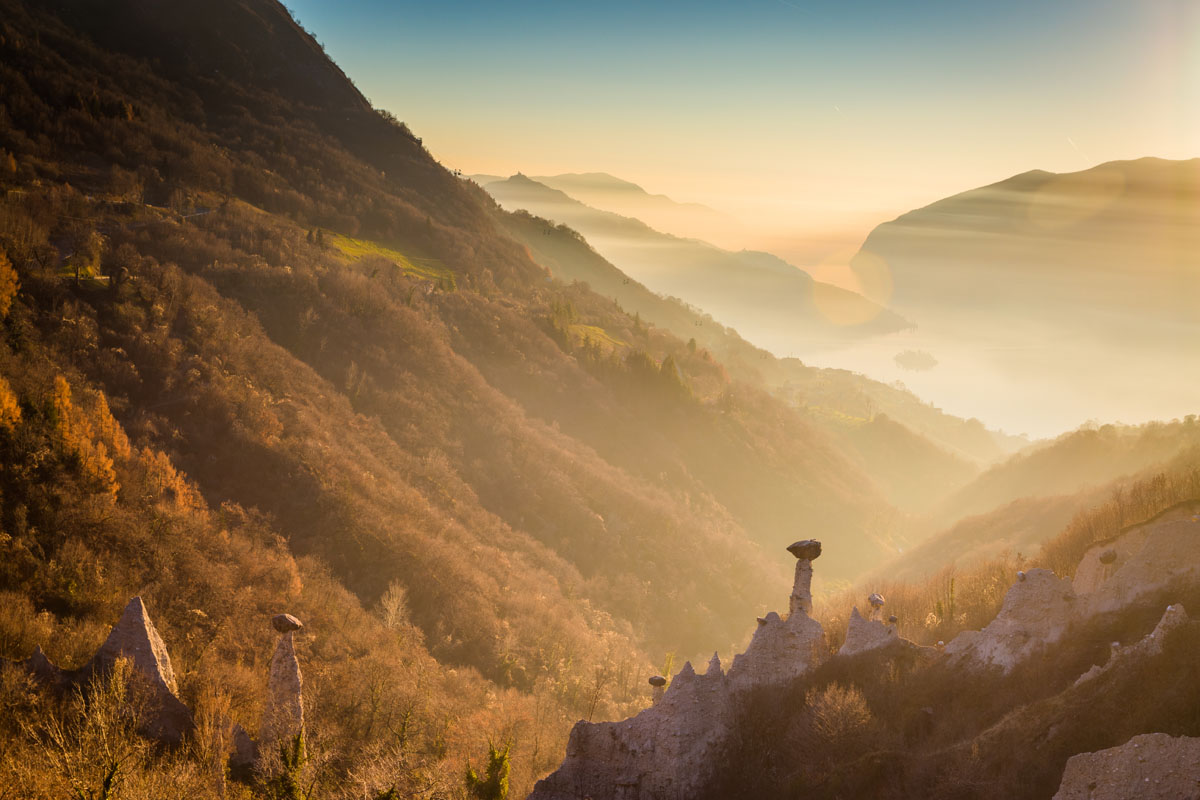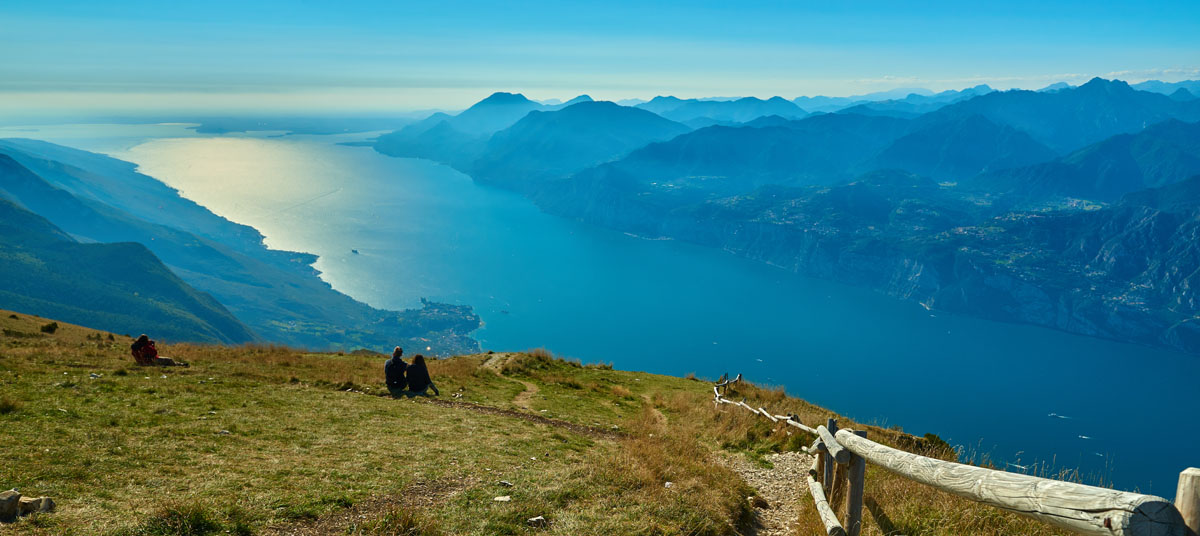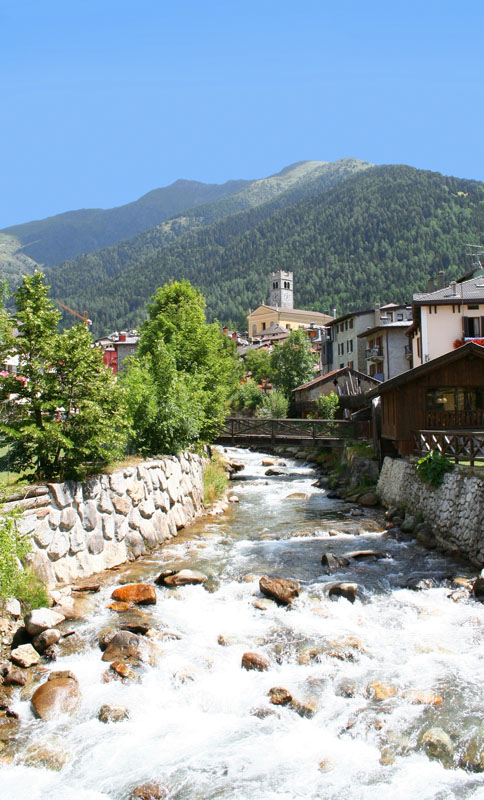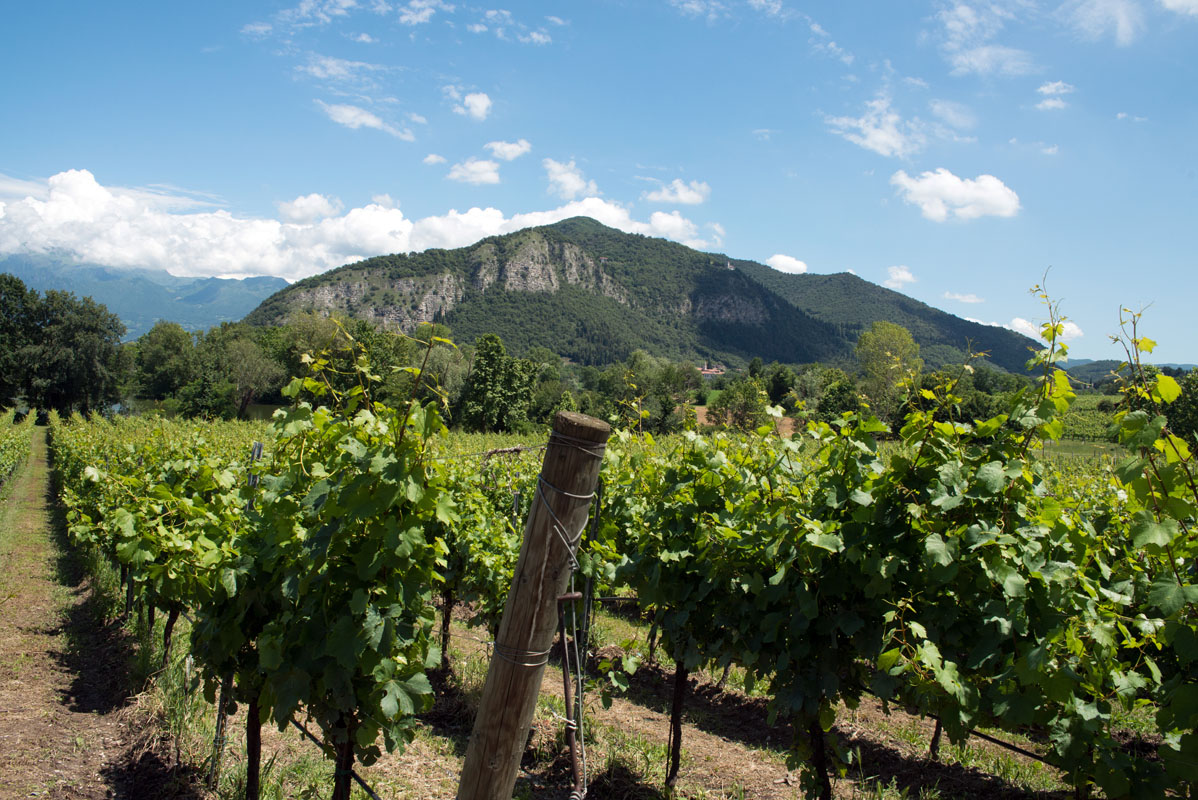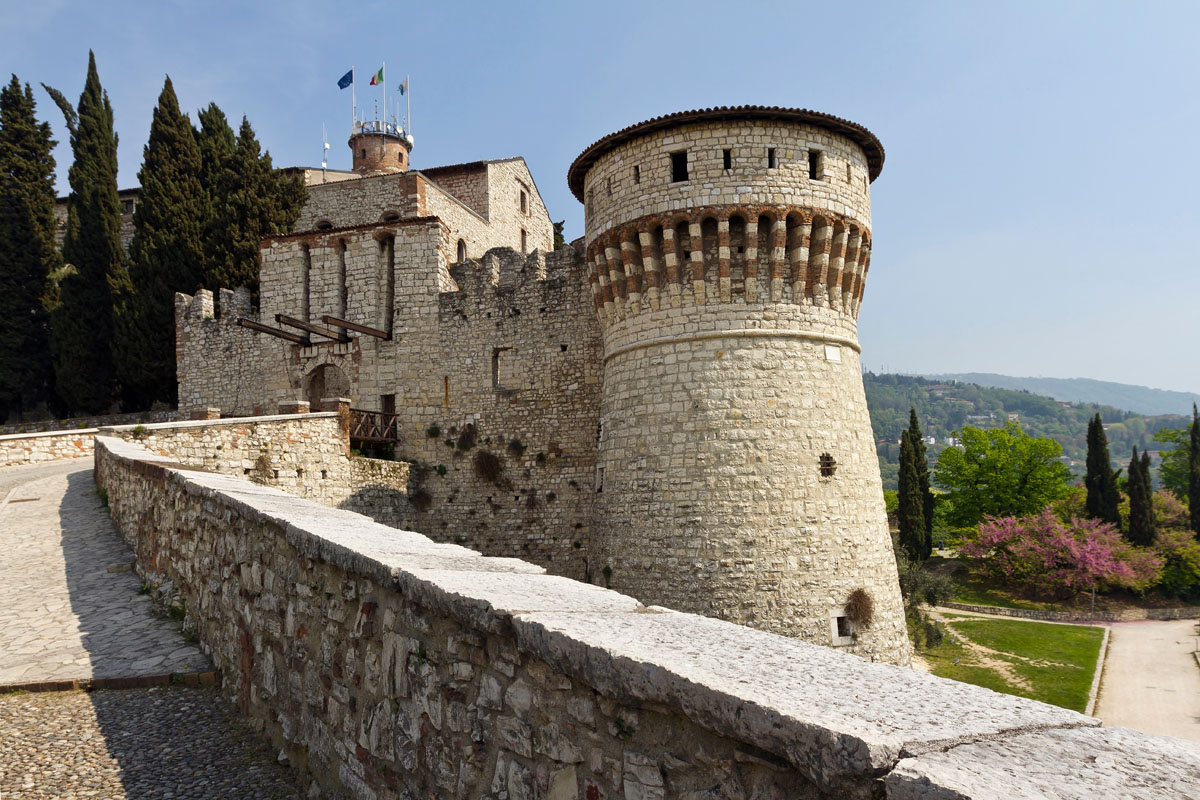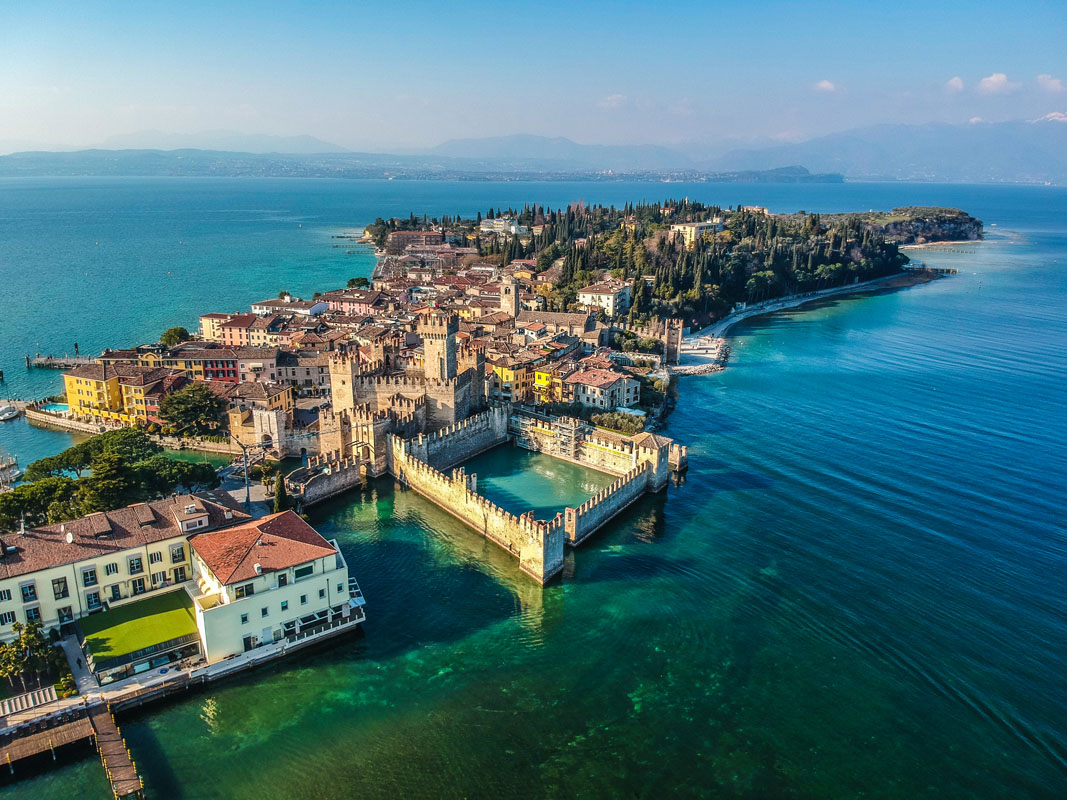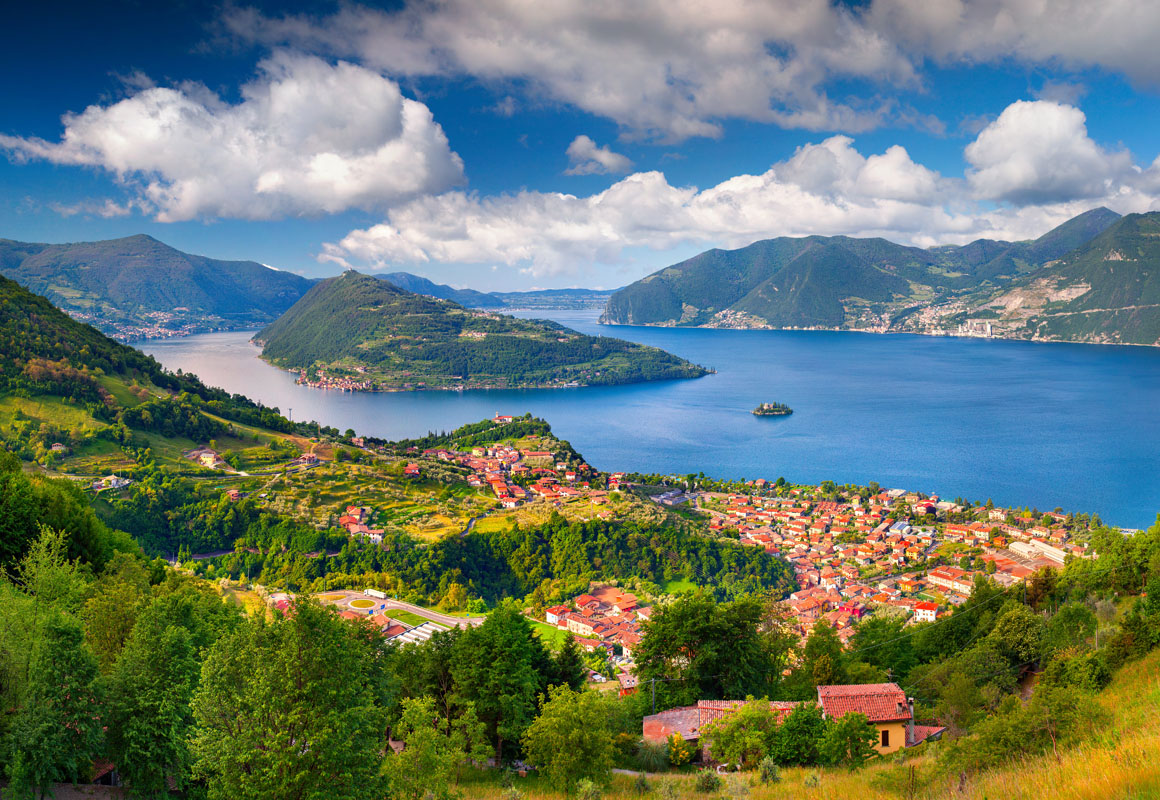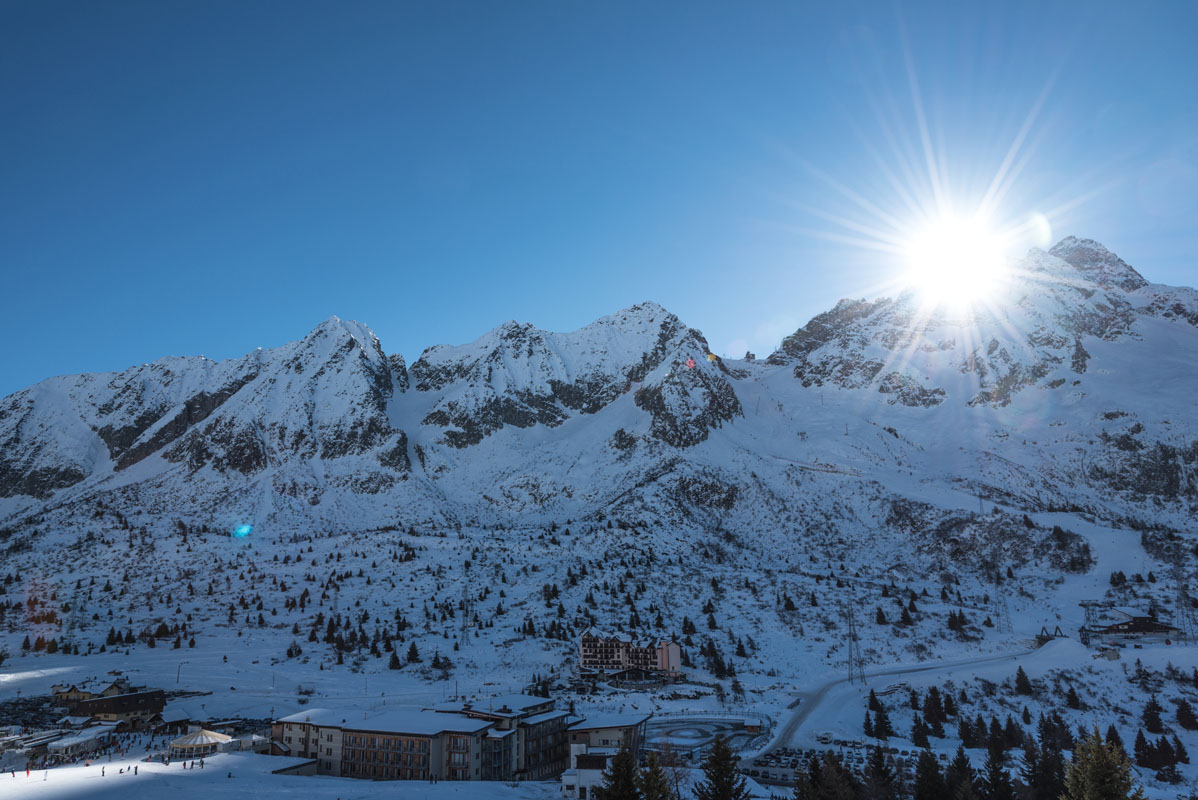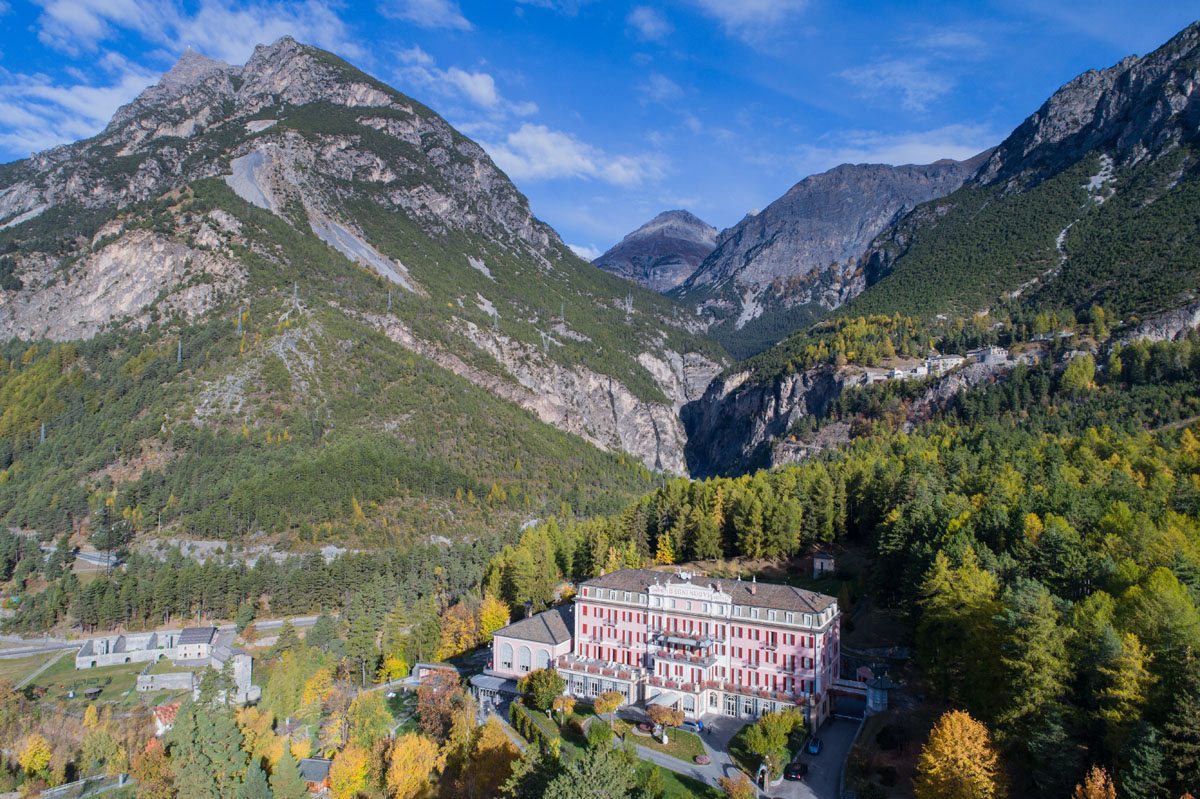There are 1000 named mountains in Brescia. Monte Adamello (3.539m) is the highest point. The most prominent mountain is Corno dell'Orselù(1,734m).
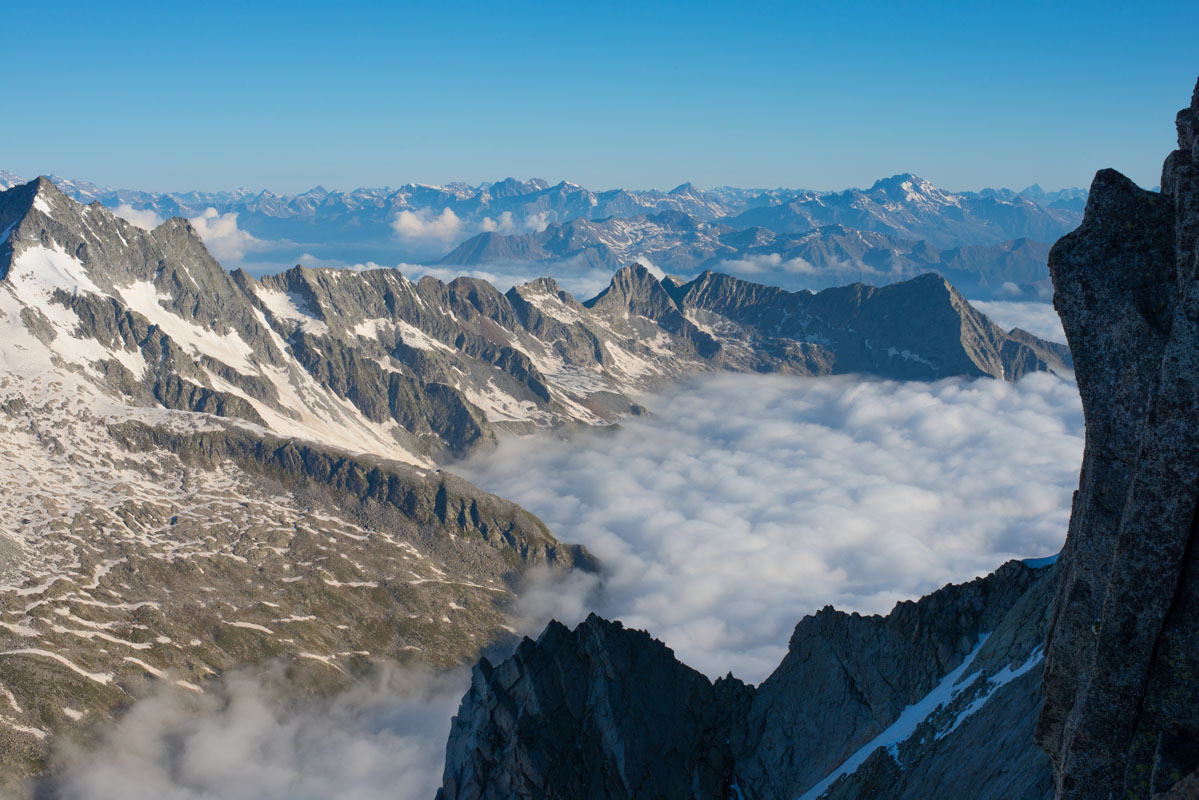
Brescia is the second biggest province of Lombardy, located on the borders of Trentino Alto-Adige and Veneto.
The major mountain range that traverses the region is the Brescia Prealps divided into two sections, the Brescia Prealps and the Garda Prealps separated by Val Trompia. Together with Val Camonica and Val Sabbia, they constitute the three major valleys of the region, besides other 26 minor valleys. Each of these three valleys has a river, respectively the Mella, the Oglio and the Chiese, as well as three major lakes plus other minor lakes, for a total of 8 water basins. Lake Garda lays on the Eastern side of the province, sharing its banks with Trento and Verona, while Lake Iseo encircles the province on the Western side, between Val Camonica and much fabled notorious Franciacorta, extending to Bergamo. Lake Idro is located in Val Sabbia.
Overall, the purely mountainous region is relatively modest, whereas the hilly area of Franciacorta dominates the province thanks to the beauty of its landscape and its popular vinery production. As to the parks and forests, Adamello Regional Park, Piramidi di Zone Nature Reserve and other protected areas like Altopiano di Cariadeghe are famous for the presence of ancient trees like hornbeams, beeches, maples and oaks.

Major Hiking Areas
- Mt. Adamello (3,539m) is the highest peak of the mountain group with the same name and it is located in Val Camonica. There is no standard trail reaching the mountaintop, but different trails are available depending on the valley you take as your starting point. The most popular route follows the trail No.6 from Malga Caldea to Rifugio Garibaldi (2,548 m.). From there, 5 hours of harsh climbing is required, mostly glaciers and an extremely complicated via ferrata. An alternative to this 5h alpine route is a trail that takes half of the time to be completed, which is also accessible to anyone with appropriate equipment. The trail to Punta del Venerocolo (3,323m) starts at the same place. The massif is located in the Adamello Regional Park, a green area of peculiar natural interest. Trail No.1 is a 50km route located quite outside the most popular trekking area and almost on completely plain terrain. Nevertheless, it is recommended only to intermediate and expert hikers, due to the presence of some difficult spots that require alpine equipment. On the whole, there are 24 trails branching off the park, leading to places characterized by the presence of particular natural phenomena or where the traces of the past are still visible; the trail leading to the semi-artificial Lake Aviolo or the trail leading to the bogs, like trail No.46 near Tonale Pass, just to give one example. The trailhead near the ossuary dedicated to the fallen soldiers of the First World War is one of the most interesting historical trails. The park is also traversed by the Oglio river cycle path. In addition, snowshoes trails to Corno D’Aola (2,648m) and other similar routes feasible in winter make this peak even more fascinating.

- Val Camonica - hikers who need a jump into the past may like to discover treasures hidden in the Camonica valley which once was the land of the Camuni civilization whose presence can still be felt when looking at their famous petroglyphs at a nominated UNESCO World Heritage Site. Outdoor lovers can choose between two trails inside the Naquane National Park. The first is a circular trail starting in Capo di Ponte, the second is Foppe di Nadro trail in the municipality of Foppe. Val Camonica is also part of the Stelvio National Park and is a popular ski destination with 102 km of ski runs and ski resorts, among which are Ponte di Legno, Corteno-Aprica, Borno and Montecampione. A must-do stop is the alpine village of Case di Viso where the original structure of the ancient village is still visible nowadays.

- Via Valeriana was the only route connecting Brescia to Val Camonica until 1850. It is said to have been paved and used by the Romans. Walking along the 30km trail, you will experience the peace and silence of nature as well as the connection with your inner self. It is a simple stroll feasible in 9h with marvellous mountains and the view of Lake Iseo to surprise you. It starts in Pisogne and reaches Pilzone. It is a great way to discover ancient boroughs without worrying about getting too tired.
- Piramidi di Zone are the so-called pyramids of rock formations characterized by a chimney-like shape reaching a height of 30m and resulting from the glacier recession of the latest Ice Age. Located in a nature reserve, the itinerary takes 1h30m starting from Cislano, in the immediate vicinity of a parking lot. There it is possible to admire S. Giorgio's Church with its beautiful frescos. The circular trail behind the church will lead you where the original erosion gave birth to the pyramids. The route is well-tracked and it is possible to enjoy a unique view both of Lake Iseo and Monte Isola. Despite the trails do not present particular difficulties it is not recommended for families with children.

- 3 Valleys Trail is multi-day trekking consisting of 8 stops, each one feasible in about 5h to 7h of walking. The standard trail presents some options for expert hikers only. Starting from Brescia, the 3V trail is marked in white and blue and walks down the border of Val Trompia with valleys nearby, Val Sabbia on the eastern side, and Val Camonica on the western side. Mountain huts and restaurants are disseminated all along the way.
The most significant points for each stop are distributed as follows:
- Conche Sanctuary
- Corna del Sonclino (1,352m)- Eremo di S. Giorgio.
- Mt. Ario (1.755m) – Falcone Pass
- Pezzeda Pass-Prael Pass- Portole Pass
- Dasdana Pass-7 Crocette Pass. Dasdana Pass is a high mountain pass at an elevation of 2.086m a.s.l The road over the pass is called Strada Provinziale 345B, also known as Delle Tre Valli. It’s 17.4 km long and the surface is gravel, but with high cliffs unprotected by guardrails. It runs almost entirely over 2.000 meters above the sea level. In some places is only wide enough for one vehicle, and in many places bordered by a drop of hundreds of meters (many hundreds of feet) is unprotected by guardrails.
- Val Palot is a ski resort with a tranquillity only to be found in smaller places. This is the ideal destination for all sporting and outdoor recreational activities, both in summer and winter. It stands at 1,100 metres above sea level, a perfect altitude for family holidays and excursions with children or the elderly.
- Polaveno commune
- Urago Mella
Lake Trekking
Garda Lake area has been inhabited since prehistoric times. It is an ambience of great naturalistic value characterized by the presence of typically Mediterranean vegetation, like olives, vines and agave, thanks to the microclimate peculiar of this zone. Campione ring is probably the most popular trail to enjoy the lake. It starts from Campione Square then continues until a bridge traversing S.Michele river to a mule track leading to the spectacular Forra di San Michele. After the passage in the woods, take trail 267 that is sneaking up into terraces and meadows and go back to the starting point in 3h30m.
Mt. Baldo (2,218m) is the ideal destination not only for hikers who love walking at 2000m altitude but also for outdoor lovers who crave to experience running downhill and paragliding. Among the various trails available, the hiking trail Gerardo Sega represents an advantageous compromise between length and panoramic views, there is the Preafessa Waterfalls (700m), Corno Gallina (1,177m), Madonna della Neve (1,082m), Baganzà Bridge (980m) and Colma di Malcesine reachable by cable car from Malcesine.

Among the other remarkable peaks of the area, there is Mt. Bestone (917m) with a trail lying out entirely on the ridge and Mt. Castello (866m) where you can take a mule track to reach the ancient defence posts used during the First World War. The galleries and cliffs along the route are stunning.
Lake Valbondione. The province can boast of 123 named lakes. Some are easily accessible, others make you toil to get there and Lake Valbondione is one of those challenges. It is located in the area of Ponte di Legno, right beside the slopes of Adamello, Conca di Valbondione. To get there, you can take two different routes running along ski runs. It takes 45m to reach the place and enjoy awesome fishing or even play golf.

Bruffione Lakes Trail is another interesting option dedicated to hikers who like the combination of waters and mountains. It is a 12km path feasible in 4h30m. It traverses Bruffione Plain and Bruffione Pass. The difficulty level is quite high, but expert hikers will be rewarded by an extraordinary view of rocks, pastures and conifer forests. The two lakes have a particular combination of colours given by the shades of sky, plants and terrain. The lakes are located near CAI trails 401 and 414.
Lake Idro is the second most important lake in the province. The circular trail takes 2h30m and leads to Valledrane Fort, located on the mountain with the same name. It is a valid option for those who want to be enchanted by the magical beauty of the lake without stressing out too much. The entire location is part of a longer trail called Alta Via dei Forti in Valle Sabbia, constituted by five stops feasible in five days, with the ending part requiring to get on a ferry. The total distance to be covered is 63km.
Franciacorta is a hilly area located just outside Brescia near Lake Iseo. It is famous both in Italy and abroad for tasty wine, especially Franciacorta wine and Spumante. However, its potential value resides in nature as well. In fact, there are numerous MBT trails, hiking trails, walking and Nordic walking trails, especially in the areas of Brescia-Iseo, Mt. Orfano (m. 450), Erbusco, Borgonato.
Franciacorta trail develops in an almost hilly area, traversing paths that connect one field to another. The highest point is Mt. Orfano. Since this is also a hunting area, during the hunting season it is recommended to walk this path only on Tuesday and Friday when hunting is not allowed.

The Mushroom trail, called so for obvious reasons, is a circular trail located in Ome village. The trailhead starts and ends in Ome square and the entire route takes about 5h to complete. Another popular Franciacorta spot is Torbiere del Sebino, a protected area of bogs, consisting of two itineraries, 3h each, perfect for birdwatching and weekends outdoors. Doing some food tourism in Strada del Vino dei Colli Longobardi, strewn among the offshoots of the Brescia Alps and the Brescia Plain, will satisfy both your eyes and your belly.
- Mt. Maddalena (870m) – tourists who are not expert hikers but still want to discover some natural beauty without going too far from the city centre may appreciate doing a daily trip to this modest mountain. It is located in the Northern area of Brescia and it is known as 'home-mountain' by locals due to its symbolic value. Until 1966, the city was connected to the top of the mountain by a cable car, which is not active anymore. The only accessible way by car is the Via Panoramica. Besides, there are 19 hiking trails. Trails 6 and 7 lead hikers to panoramic spots like Falcone d'Italia Fortress on Cidneo hill through gentle slopes; some other trails are wilder and more arduous, like trail 1 which connects S. Eufemia’s Church to Ex Rifugio Mt. Maddalena in 2h30m stopping in certain points where is possible to admire karstic wells and caves.
Major cities and facilities
Despite the fact Brescia is a lesser-known tourism destination, it attracts many visitors every year, not only from Italy but also from Germany, Switzerland, Russia, and the UK. The area around Lake Garda is particularly popular for Sirmione and Boario hot springs, located a few minutes away from Lake Iseo, in a strategic position that makes visiting Val Camonica quite simple and convenient. The lesser known Angolo Hot Springs are also located in the vicinity of big ski resorts, like Schilpario and other places of interest, like Mt. Pora (1,880m) and Moro Lake.

Brescia can be reached easily from Milan by Freccia Rossa train or local trains. It is also not so far from important cities like Venice. A stop in Desenzano del Garda to pay a visit to Gardaland the biggest Italian amusement park is mandatory.
Cities
- Brescia was founded over 3,200 years ago (in antiquity Brixia). It has been an important regional centre since pre-Roman times. Its old town contains the best-preserved Roman public buildings in northern Italy and numerous monuments, among these the medieval castle, the Old and New cathedral, the Renaissance Piazza della Loggia and the rationalist Piazza della Vittoria.
- Desenzano del Garda can boast of beautiful views of the Alps from the southern shore of Lake Garda. It has three large beaches (Desenzanino Beach, Spiagga d'Oro, and Porto Rivoltella Beach), and 27 major hotels. Desenzano is the heart of nightlife on the southern shore of Lake Garda, with several discos and pubs. In the summer, its main squares, Piazza Malvezzi and Piazza Matteotti, are crowded all night with young and partying people. At the heart of the city is a series of interconnected piazze that house numerous open-air cafés, various shops, gelaterie (ice-cream parlours), and bars.
- Sirmione has also been a popular resort since the Ancient Roman times, it is famous not only for its beaches and unique thermae but also for its formidable fort which towers over the historic Old Town. You have that feeling of living in the medieval times here.

- Ponte di Legno The silence and the magic of this village are a real attraction for people wishing to spend time in the natural environment. Situated in a sunny position at an altitude of 1258m, Ponte di Legno is in an important climatic location and is a mountain tourist resort both in summer and winter, as well as being the most important town in the Val Camonica. In the winter there are slopes with guaranteed snow, to suit all levels, these are connected to those of Temù, and are served by 5 different lifts and 8 pistes which guarantee the best skiing. A cable car joins Ponte di Legno to Passo Tonale in just 14 minutes, during the journey of which you can take in the marvellous scenery of the mountains of the Val Camonica.
- Iseo lies on the southern shore of Lake Iseo and has much to offer. Should you be a culture-vulture with a historical twist, visit the Oldofredi Castle (circa 11th century), Sanctuary of Our Lady of the Snow (Santuario Madonna della Neve), Pieve di St. Andrea - the church founded in the 6th century by Bishop San Vigilio on the site of a Roman temple and subsequently reconstructed in the 12th century in Lombard style. However, Iseo is not solely about historic remnants of the times past, there many hiking trails starting off the town, you can sail on the lake or even take a flight over the region.

Ski Run
Mountain Huts
- Rifugio Prudenzini
- Rifugio Garibaldi
- Rifugio Al Bait
- Rifugio al Lago del Mortirolo
- Rifugio Campione
- Baita Iseo
- Rifugio Colombè
- Baita Adamè
- Rifugio Medelet
- Rifugio Pratolungo
- Rifugio Valtrompia
- Rifugio Monte Cimosco
- Rifugio Croce di Marone
- Rifugio Tonolini
- Malga Stain
- Rifugio Valdaione
- Rifugio Laeng
- Rifugio Tita Secchi
- Rifugio Baitone
Spas and Resorts
- Terme di Sirmione, on Lake Garda, is a spa resort located on a peninsula by the same name, considered one of Europe's most important thermal centres. Lake Garda's alluring charm and unique climate make it a perfect place for rediscovering your mental and physical balance and for recuperating your energy, beauty and inner harmony. Thanks to the precious salsobromoiodic sulphurous water that flows spontaneously from the depths of the lake, the spas of Terme di Sirmione are at the forefront for treating respiratory diseases, rheumatic conditions and motor rehabilitation. The thermal water feeds the "Virgilio" and "Catullo" facilities and the brand new Aquaria Spa Wellness Centre, which offers numerous ways to relax and beautify the body: indoor and outdoor thermal pools, an outdoor freshwater swimming pool where fitness classes are also held; a water circuit between saunas, steam baths, showers; multi-sensory relaxation areas, including the Salt Room, the Music Room and the Starry Sky, etc.
- Virgilio Hot Springs. The famous Terme di Virgilio are in Colombare at the foot of the Sirmione peninsula and very near the Palace Hotel Villa Cortine. They are open all year and easy to reach being on the Brescia-Verona state road. This famous thermal centre offers specialised bronchial-pneumonological therapies as well as for the treatment and prevention of numerous pathologies of the trachea, the bronchial tubes and the lungs. It consists of two clinics equipped with sophisticated diagnostic equipment as well as equipment for multifunctional inhaler malfunctions and pulmonary ventilations.
- Terme di San Pellegrino. Extensive refurbishing has been carried out in recent years and when the place reopened, in December 2014, visitors were enchanted. If this Italian Liberty style construction was already fabulous in the past, today it is simply divine. It is still surrounded by the green of the Val Brembana valley. The resort has more than 30 different spa treatments, including panoramic pools, sensorial pools, waterfalls, Kneipp sessions, Vichy showers, steam baths and solarium garden. There are indoor and outdoor pools, saunas, bio saunas, Turkish baths, salt and ice rooms and a large massage zone. The indoor areas cover 6,000 square metres; those outdoors, set in the Parco della Fonte di San Pellegrino, cover a further 3,200.
- Terme di Trescore is located at the entrance of Val Cavallina, in a natural paradise, at only 15 km from Bergamo, and is fed by three sulphur water sources, which the ancient Romans and, later, the Gauls appreciated and exploited for their wellbeing.
- Terme di Vallio is a brand name for "Acqua Castello" bottled water (since 1955). This bicarbonate, alkaline, light and highly digestible water has several properties and is considered the treasure of the Terme di Vallio spa centre, where it is used in drinking and inhalation treatments. Through its digestive, decongesting, anti-spastic and depurative actions, it treats gastrointestinal, liver, kidney and urinary disorders. The Vallio spa facility is located in a particularly enthralling location, at 400 metres above sea level and a few yards from a water source. It is not far away from the Vallio town centre (Vallio is a small village in the Valsabbia valley at about 20 km from Brescia), nestled in a silent, green and scented pinewood.
- Bormio Terme are for those who fancy some deep unwinding after a super active binge. If you are a sports fan or have uber-active kids, or planning a family holiday, this is the place to be. If you are in the Alta Valtellina mountains, you love skiing, walking and mountain biking but cannot do without water, you absolutely must include a swim at Bormio Terme. Fed by the beneficial warm Cinglaccia natural spring waters, it has stayed true to the historic Bormio spa tradition, but with totally modernised facilities, including splendid indoor and outdoor pools, and services that are suitable for any age. Its distinctive feature is that it combines classic spa treatments (mud, inhalations, physiotherapy, and rehabilitation) with a very well-equipped sports and wellbeing zone.

- Terme di Franciacorta – Terme di Ome At Ome in the vine-covered countryside of Franciacorta, the Fonte del Maglio produces bicarbonate-calcic water and the Fonte Piccola water with a high iron content. They are recommended for kidney, liver, respiratory tract and bilious complaints as well as diabetes and obesity.
- Terme di Boario is reimbursed by the Italian National Health Service (NHS; the center is classified at the 1° level super by the Italian Health Ministry) or charged. The center includes a paediatric department where children receive inhalatory treatments in a colourful and funny environment. The spa stands among rare botanical species in an Italian-style garden where it would be no surprise to come across a damsel all in white and her knight in shining armour from a hundred years ago, but if you think this is somewhere time stood still you are very much mistaken! The equipment is superb, the treatments are many. When you feel you have had enough, visit the Boario Park Adventure, cross a Tibetan bridge, climb a rope ladder, walk on moving stirrups and get over your fear of heights, or learn to control actions and emotions thanks to a series of exercises. For young and old seekers of excitement there is Powerfan, a leap into mid-air from a height of 10 metres, and the Alpine Coaster, a sled track that winds at high speed from the Padiglione Fausta to the upper part of the park.



